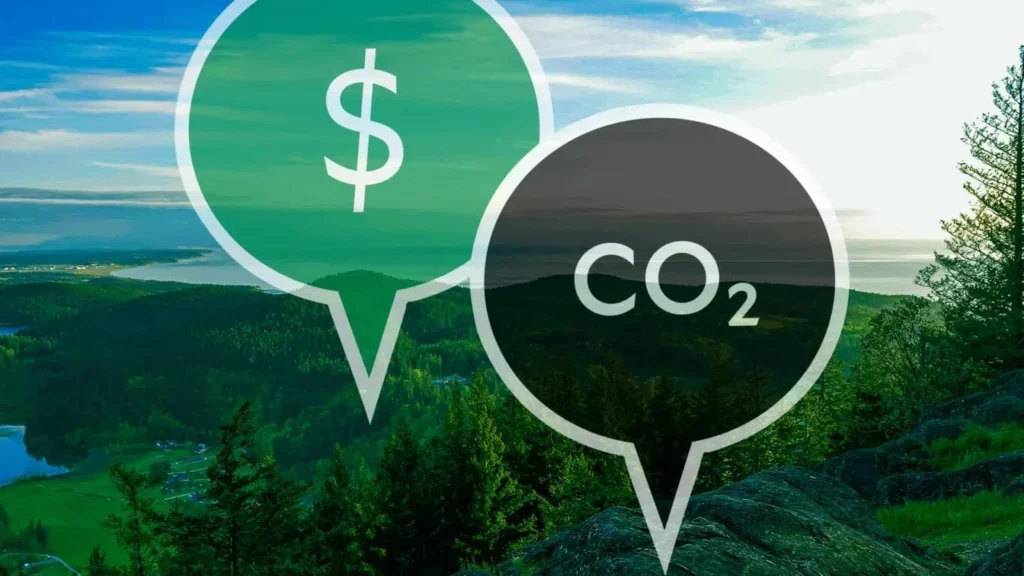Nowadays, several parts of the world are suffering due to the increase of heat waves. Take example in Jakarta, the excessive heat has become worse during these couple of years. In May 2022, the average air temperature reached 36 degrees celsius according to records from the Meteorology, Climatology and Geophysics Agency (BMKG).
This phenomenon is caused by Greenhouse Gases (GHGs), the gases in the Earth’s atmosphere that trap heat and warm the planet’s surface. The GHGs are triggered by industries and human activities such as the use of transportation, commercial and residential, agriculture, land use and forestry. Besides, it is also triggered by industrial activities that primarily involve fossil fuels burned on-site at energy facilities.
There are many efforts to reduce GHG emissions, and one of the efforts is to implement a carbon pricing approach that has an environmental-centric design.
Table of Contents
ToggleWhat Is Carbon Pricing?
Carbon pricing is an approach to spur climate action by placing a fee on emitting and/or offering an incentive for emitting less (Source: United Nations Climate Change). The price signal created shifts in consumption and investment patterns, making economic development compatible with climate protection. Currently, 40 national and 25 sub-national jurisdictions put a price on carbon, and the emerging trend across carbon pricing approaches now is a move towards international linkage of carbon markets.

The effort to implement jurisdictions on carbon pricing is aligned with Article 6.2 of the Paris Agreement, which “establishes the potential of trading emission reduction credits across borders, between nations or jurisdictions. This can encourage the linking of carbon pricing approaches resulting in the reduction of emissions by a magnitude greater than what is possible solely domestically or nationally.”
How Carbon Pricing Works on Reducing the GHGs?
As a market-based mechanism or policy, carbon pricing aims to internalise the cost of carbon pollution into the economy. In order to contribute in reducing the GHGs, carbon pricing works by two main approaches:
-
- Carbon Tax
Carbon tax is implemented by the government to set a specific tax rate per ton of carbon dioxide (CO2) emitted or per unit of fossil fuel with a high carbon content. As the carbon tax has been implemented, the industries, companies or other entities that emit CO2 are required to pay the carbon tax.
The revenue generated from the carbon tax is then used for various environmental purposes by the governments. Such as funding renewable energy projects, or other environmentally-friendly infrastructures. In the long run, this mechanism aimed to encourage behavioural changes in each entity to be more aware in choosing low-carbon alternatives.
-
- Cap and Trade (Emissions Trading System)
Cap and Trade that is also known as Emissions Trading System (ETS), is a market-based approach that works by controlling pollution that potentially results in greenhouse gas (GHG) emissions.
In this approach, the government sets an overall limit or cap as the total amount of CO2 emissions allowed from certain sectors or industries. Regulated entities are then allowed to sell, buy, or trade these permit emissions in a regulated market.
Cap and Trade systems provide flexibility for regulated entities to find the most cost-effective ways to reduce emissions. By creating a financial incentive to reduce emissions below their allocated allowances, Cap and Trade can drive innovation, encourage investment in cleaner technologies, and promote emissions reductions across the regulated sectors.
Implementing the carbon pricing policy to reduce GHGs in parallel gives these benefits, such as; economic efficiency, revenue generation, and in a wider range can affect the benefits of global cooperation.
The discourse on implementing carbon trading in Indonesia has been under discussion for several years. For instance in 2021, through Presidential Regulation Number 98 Year 2021 on the Carbon Pricing Mechanism. However, Indonesia then chose to postpone the plan until 2025 because it was still taking into account the readiness of the carbon market mechanism.
Indonesia itself, according to the Global Carbon Project, is one of the countries with the largest carbon emissions, as evidenced by the carbon value throughout 2022 reaching 700 million tons per year. Therefore, it is important to implement carbon pricing immediately to control the impact of carbon emissions so then it is not getting worse. Get to know more about how your company or organisation can contribute in creating a better environmental future by trying out FREE DEMO from Satuplatform to measure the emissions produced by your company.
Similar Article
Bagaimana Peran Perang dan Militer sebagai Kontributor Jejak Karbon Global
Konflik dan perang menciptakan kontributor jejak karbon baru dengan dampak signifikan dan sayangnya, sebagian besar tidak dihitung. Emisi ini jarang…
Why Product Lifespan Is the Next Frontier for Sustainable Business
Embracing product longevity and extending product lifespan emerges as a current and indispensable strategic priority for cultivating sustainable business growth…
Green Building sebagai Cara Mengurangi Jejak Karbon, Ini yang Perlu Dilakukan!
Di tengah isu perubahan iklim yang semakin mendesak, bisnis dan masyarakat global mulai sadar pentingnya pembangunan yang lebih ramah lingkungan.…
Unveiling the Environmental Impact of Children’s Toys Industry
The global toy industry plays a significant role in early childhood development, creativity, and education. Toys bring joy, imagination, and…
ESG as Sustainability Initiatives for Modern Industry
In today’s world, sustainability is no longer just a “nice-to-have”, but it’s a must. With rising concerns about climate change,…
ESG Strategies for Business Growth in Developing Countries
In today’s fast-changing world, businesses are no longer only measured by profits. Companies are now expected to be responsible for…







